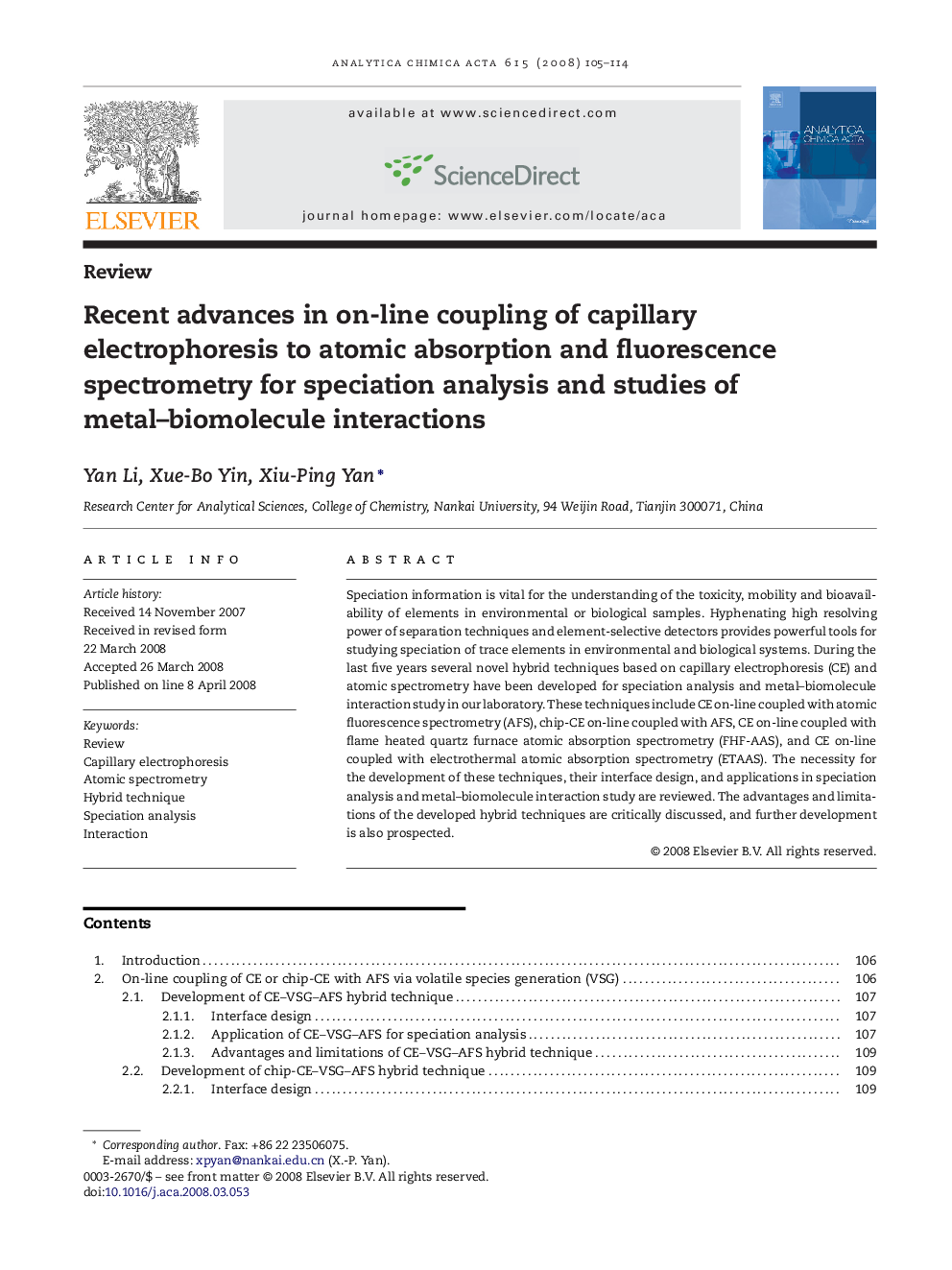| Article ID | Journal | Published Year | Pages | File Type |
|---|---|---|---|---|
| 1169617 | Analytica Chimica Acta | 2008 | 10 Pages |
Abstract
Speciation information is vital for the understanding of the toxicity, mobility and bioavailability of elements in environmental or biological samples. Hyphenating high resolving power of separation techniques and element-selective detectors provides powerful tools for studying speciation of trace elements in environmental and biological systems. During the last five years several novel hybrid techniques based on capillary electrophoresis (CE) and atomic spectrometry have been developed for speciation analysis and metal-biomolecule interaction study in our laboratory. These techniques include CE on-line coupled with atomic fluorescence spectrometry (AFS), chip-CE on-line coupled with AFS, CE on-line coupled with flame heated quartz furnace atomic absorption spectrometry (FHF-AAS), and CE on-line coupled with electrothermal atomic absorption spectrometry (ETAAS). The necessity for the development of these techniques, their interface design, and applications in speciation analysis and metal-biomolecule interaction study are reviewed. The advantages and limitations of the developed hybrid techniques are critically discussed, and further development is also prospected.
Keywords
Related Topics
Physical Sciences and Engineering
Chemistry
Analytical Chemistry
Authors
Yan Li, Xue-Bo Yin, Xiu-Ping Yan,
